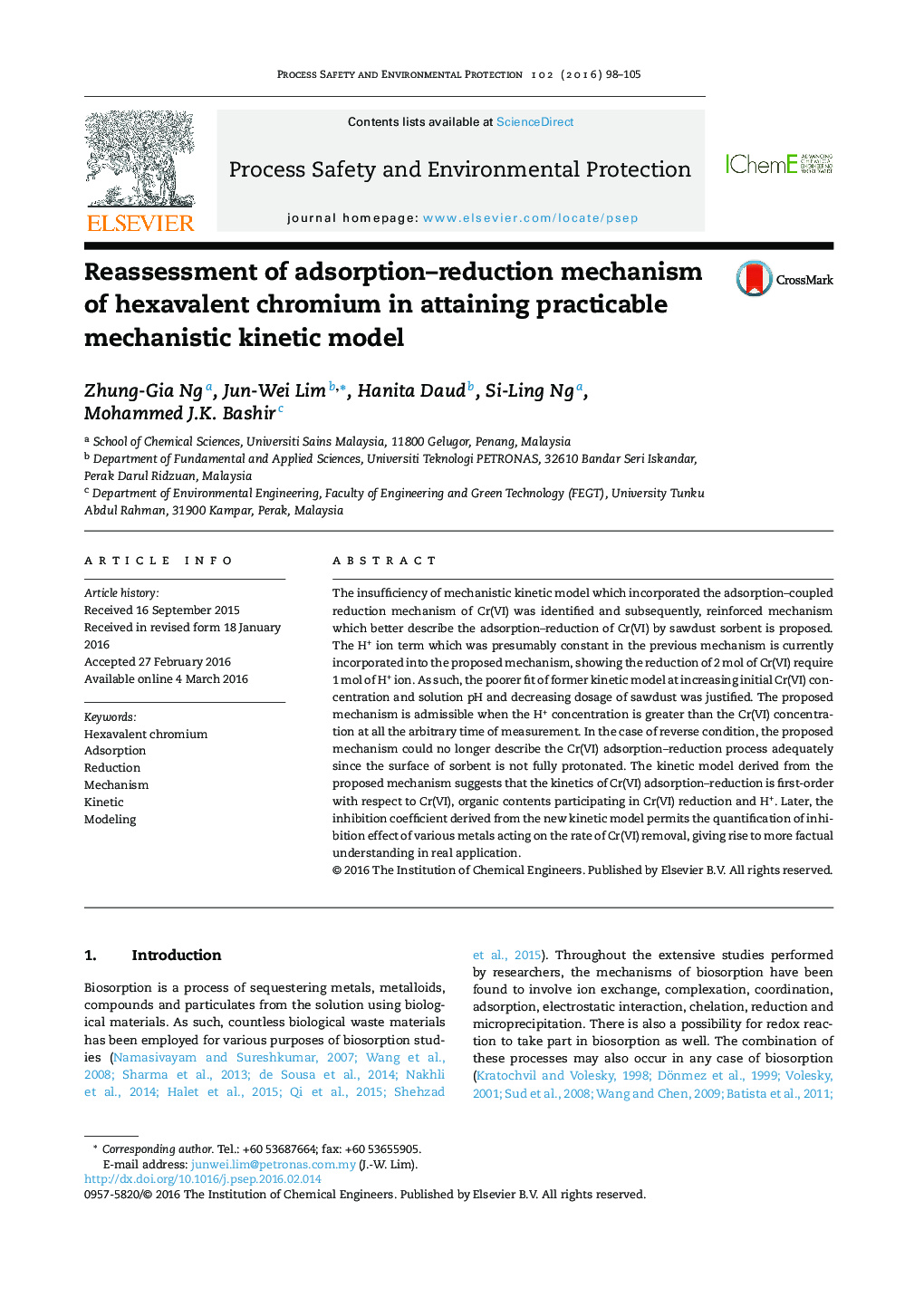| Article ID | Journal | Published Year | Pages | File Type |
|---|---|---|---|---|
| 588064 | Process Safety and Environmental Protection | 2016 | 8 Pages |
•Newly proposed Cr(VI) adsorption–coupled reduction mechanism.•Significance of H+ ion on adsorption–reduction of Cr(VI).•Kinetic modeling of Cr(VI) removal via adsorption–reduction by sawdust.•Impact of co-pollutant on adsorption–reduction of Cr(VI) by sawdust.
The insufficiency of mechanistic kinetic model which incorporated the adsorption–coupled reduction mechanism of Cr(VI) was identified and subsequently, reinforced mechanism which better describe the adsorption–reduction of Cr(VI) by sawdust sorbent is proposed. The H+ ion term which was presumably constant in the previous mechanism is currently incorporated into the proposed mechanism, showing the reduction of 2 mol of Cr(VI) require 1 mol of H+ ion. As such, the poorer fit of former kinetic model at increasing initial Cr(VI) concentration and solution pH and decreasing dosage of sawdust was justified. The proposed mechanism is admissible when the H+ concentration is greater than the Cr(VI) concentration at all the arbitrary time of measurement. In the case of reverse condition, the proposed mechanism could no longer describe the Cr(VI) adsorption–reduction process adequately since the surface of sorbent is not fully protonated. The kinetic model derived from the proposed mechanism suggests that the kinetics of Cr(VI) adsorption–reduction is first-order with respect to Cr(VI), organic contents participating in Cr(VI) reduction and H+. Later, the inhibition coefficient derived from the new kinetic model permits the quantification of inhibition effect of various metals acting on the rate of Cr(VI) removal, giving rise to more factual understanding in real application.
